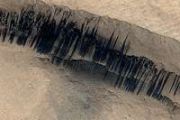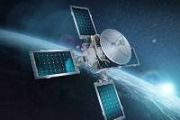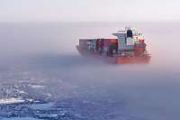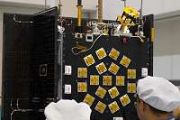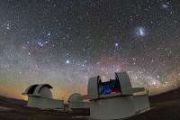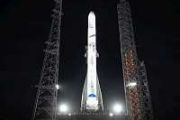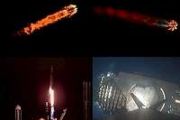
Copernical Team
China unveils logos for three space missions in 2025
 The China Manned Space Agency (CMSA) has revealed the official logos for three prominent missions scheduled for 2025: the crewed spaceflights Shenzhou XX and Shenzhou XXI, and the cargo spacecraft Tianzhou 9. The announcement was made on Monday as part of efforts to highlight China's expanding presence in space exploration.
Each of these newly unveiled logos is designed to represent the br
The China Manned Space Agency (CMSA) has revealed the official logos for three prominent missions scheduled for 2025: the crewed spaceflights Shenzhou XX and Shenzhou XXI, and the cargo spacecraft Tianzhou 9. The announcement was made on Monday as part of efforts to highlight China's expanding presence in space exploration.
Each of these newly unveiled logos is designed to represent the br NASA 3D-Printed Antenna Takes Additive Manufacturing to New Heights
 In fall 2024, NASA developed and tested a 3D-printed antenna to demonstrate a low-cost capability to communicate science data to Earth. The antenna, tested in flight using an atmospheric weather balloon, could open the door for using 3D printing as a cost-effective development solution for the ever-increasing number of science and exploration missions.
h3>Printing /h3>
For this technolog
In fall 2024, NASA developed and tested a 3D-printed antenna to demonstrate a low-cost capability to communicate science data to Earth. The antenna, tested in flight using an atmospheric weather balloon, could open the door for using 3D printing as a cost-effective development solution for the ever-increasing number of science and exploration missions.
h3>Printing /h3>
For this technolog Almagest Space deploys its ELEVATION-1 E-Band satellite
 Almagest Space Corporation, a US-based leader in developing secure data relay systems for government and commercial use, has announced the successful launch and deployment of ELEVATION-1. This demonstration satellite carries the first-ever E-band communications payload, a critical step toward creating Almagest's high-performance data solutions.
Launched with the support of D-Orbit S.p.A. o
Almagest Space Corporation, a US-based leader in developing secure data relay systems for government and commercial use, has announced the successful launch and deployment of ELEVATION-1. This demonstration satellite carries the first-ever E-band communications payload, a critical step toward creating Almagest's high-performance data solutions.
Launched with the support of D-Orbit S.p.A. o Singapore joins Worldwide Scientific Network GNOME to explore dark matter and exotic physics
 Singapore has officially joined the Global Network of Optical Magnetometers to search for Exotic physics (GNOME), an international collaboration focused on identifying signals of dark matter and other exotic astrophysical fields. Dark matter, which alongside dark energy is theorized to make up 95% of the universe, presents one of the greatest challenges to modern physics due to its elusive natur
Singapore has officially joined the Global Network of Optical Magnetometers to search for Exotic physics (GNOME), an international collaboration focused on identifying signals of dark matter and other exotic astrophysical fields. Dark matter, which alongside dark energy is theorized to make up 95% of the universe, presents one of the greatest challenges to modern physics due to its elusive natur Establishing a permanent lunar presence will depend on ingenuity and the moon's own resources
 NASA's Artemis program goal of establishing a human presence on the Earth's moon is closer than ever to becoming a reality within the next few decades. But today's starry-eyed dreamers are reckoning with the gritty reality of building a permanent base on an airless, dusty, radiation-blasted rock thousands of miles from home. How hard can it be?
The answer, obviously, is very. But with a lo
NASA's Artemis program goal of establishing a human presence on the Earth's moon is closer than ever to becoming a reality within the next few decades. But today's starry-eyed dreamers are reckoning with the gritty reality of building a permanent base on an airless, dusty, radiation-blasted rock thousands of miles from home. How hard can it be?
The answer, obviously, is very. But with a lo Bright Comet's Tail Dazzles in Images from ESA/NASA SOHO Spacecraft
 From Jan. 11 to 15, 2025, a bright comet surged through images from the ESA (European Space Agency) and NASA SOHO (Solar and Heliospheric Observatory) spacecraft. Called C/2024 G3 (ATLAS), the comet made its closest pass to the Sun, or perihelion, on Jan. 13, soaring a mere 8 million miles (or 9% of the average Earth-Sun distance) from our star.
These views of comet ATLAS were captured by
From Jan. 11 to 15, 2025, a bright comet surged through images from the ESA (European Space Agency) and NASA SOHO (Solar and Heliospheric Observatory) spacecraft. Called C/2024 G3 (ATLAS), the comet made its closest pass to the Sun, or perihelion, on Jan. 13, soaring a mere 8 million miles (or 9% of the average Earth-Sun distance) from our star.
These views of comet ATLAS were captured by Advanced modeling improves Gateway Lunar dust mitigation
 NASA's Artemis program is spearheading efforts to return humans to the Moon, establish a sustainable lunar presence, and pave the way for crewed missions to Mars. As part of this initiative, engineers are tackling the challenge of lunar dust, a substance known for its sharp, abrasive particles that adhere to spacesuits and disrupt equipment functionality.
Lunar dust emerged as a significan
NASA's Artemis program is spearheading efforts to return humans to the Moon, establish a sustainable lunar presence, and pave the way for crewed missions to Mars. As part of this initiative, engineers are tackling the challenge of lunar dust, a substance known for its sharp, abrasive particles that adhere to spacesuits and disrupt equipment functionality.
Lunar dust emerged as a significan Three rockets will ignite Poker Flat's 2025 launch season
 Three NASA sounding rockets are set to launch from Poker Flat Research Range as early as Tuesday to learn more about three types of aurora - black, flickering and fast-pulsating.
The launch window is Jan. 21 through Feb. 5.
The University of Alaska Fairbanks Geophysical Institute owns Poker Flat, located at Mile 30 Steese Highway, and operates it under a contract with NASA's Wallops
Three NASA sounding rockets are set to launch from Poker Flat Research Range as early as Tuesday to learn more about three types of aurora - black, flickering and fast-pulsating.
The launch window is Jan. 21 through Feb. 5.
The University of Alaska Fairbanks Geophysical Institute owns Poker Flat, located at Mile 30 Steese Highway, and operates it under a contract with NASA's Wallops SwRI-led PUNCH spacecraft reach final milestone before launch
 Four compact spacecraft, designed and constructed by Southwest Research Institute (SwRI), have arrived at Vandenberg Space Force Base in California for final preparations ahead of their upcoming launch. NASA's Polarimeter to Unify the Corona and Heliosphere (PUNCH) mission will share its ride to orbit with the Spectro-Photometer for the History of the Universe, Epoch of Reionization, and Ices Ex
Four compact spacecraft, designed and constructed by Southwest Research Institute (SwRI), have arrived at Vandenberg Space Force Base in California for final preparations ahead of their upcoming launch. NASA's Polarimeter to Unify the Corona and Heliosphere (PUNCH) mission will share its ride to orbit with the Spectro-Photometer for the History of the Universe, Epoch of Reionization, and Ices Ex Now That's Ingenuity: First Aircraft Measurement of Winds on Another Planet
 Researchers have used an aircraft to measure the wind speed on Mars, marking the first time this method has been used on another planet. This groundbreaking measurement was made possible by the Ingenuity helicopter, which was active for nearly three years and spent, cumulatively, more than two hours in flight on the Red Planet.
In February 2021, Mars got two new inhabitants: the Perseveran
Researchers have used an aircraft to measure the wind speed on Mars, marking the first time this method has been used on another planet. This groundbreaking measurement was made possible by the Ingenuity helicopter, which was active for nearly three years and spent, cumulatively, more than two hours in flight on the Red Planet.
In February 2021, Mars got two new inhabitants: the Perseveran 













